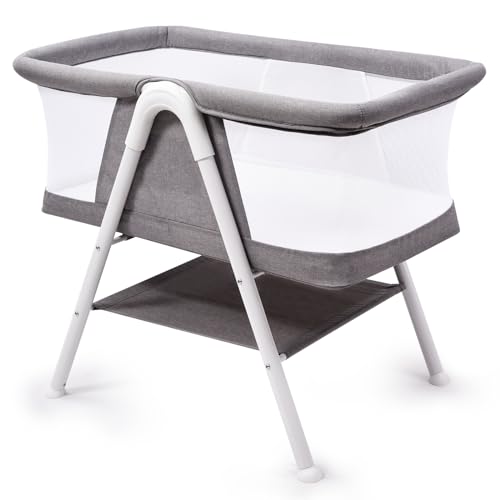Understanding Cot Infants: A Comprehensive Guide for New Parents
Welcoming a newborn into the world is one of life's most jubilant experiences; nevertheless, it is also laden with duties, particularly concerning safety and care. The cot, or crib, is an essential component in making sure a safe sleeping environment for babies. This short article intends to notify moms and dads about the essential aspects of cot infants, clarifying safety, types of cots, advised practices, and far more.
What is a Cot Infant?
A "cot infant" describes an infant that sleeps in a cot, which is a little bed particularly created to supply a safe sleeping space for babies, usually ages 0 to 2 years. The primary purpose of a cot is to keep babies safe while they sleep, reducing the danger of falls and guaranteeing they are safe and secure in a contained environment.
Kinds of Cots
When picking the best cot for an infant, parents have a number of choices to pick from. Below is a comprehensive table describing different kinds of cots readily available in the market:
| Type of Cot | Description | Advantages | Disadvantages |
|---|---|---|---|
| Standard Cot | A normal cot made from wood or metal, developed for babies approximately 24 months. | Safe, long lasting, adjustable mattress height. | Bulky, might take up substantial area. |
| Travel Cot | A portable, light-weight cot that can be quickly folded. | Easy to transport, ideal for taking a trip. | Less sturdy than standard cots. |
| Co-Sleeper | A cot that attaches to the parents' bed. | Promotes bonding, enables simple access for nursing. | Limited sleeping area, might not be as safe. |
| Convertible Crib | A cot that can be changed into a toddler bed. | Long-lasting usage, adaptable as your child grows. | Higher preliminary expense, more complicated assembly. |
| Moses Basket | A little, portable basket for newborns, normally used in the early months. | Lightweight, relaxing environment for newborns. | Brief lifespan, less safe as babies grow. |
Security Guidelines for Cot Infants
Making sure the safety of a cot infant is paramount. The American Academy of Pediatrics (AAP) provides several guidelines that moms and dads should abide by when utilizing cots:
- Placement: Place the cot far from windows, curtains, cords, and lights to avoid any potential risks.
- Mattress Fit: Ensure the bed mattress fits comfortably into the cot frame with no gaps, eliminating the danger of entrapment.
- Bedding: Use a firm mattress with a fitted sheet. Baby Cots For Sale , bumper pads, heavy blankets, and pillows to reduce suffocation dangers.
- Sleeping Position: Always put the infant on their back to sleep. This position has actually been linked to a considerable reduction in Sudden Infant Death Syndrome (SIDS).
- Routine Checks: Inspect the cot regularly for loose or damaged parts, and tighten up or replace them as required.
Additional Considerations
In addition to the safety guidelines, there are other factors to consider when taking care of cot babies:
- Monitoring Temperature: Infants can easily end up being too hot or too cold. Dressing them in suitable layers and ensuring the cot is in a comfortable environment is vital.
- Regular: Establishing a consistent bedtime routine can assist babies feel secure and promote better sleep practices.
- Transitioning: As babies grow, parents must be prepared for the shift from cot to young child bed. Signs of preparedness consist of climbing out of the cot or going beyond the weight limitation.
FAQs
For how long can a baby stay in a cot?
Normally, children can use a cot up until they reach 24 months or when they can climb out individually. Always examine the maker's suggestions for specific weight limits and safety guidelines.
Is a co-sleeper safe?
Co-sleepers can be safe when properly used, supplied that they attach firmly to the parents' bed. Constantly follow safety recommendations to prevent any threats connected with sleeping plans.
What type of bed linen should be utilized in a cot?
A firm bed mattress with a fitted sheet is recommended. Prevent any additional bedding, including pillows, blankets, or stuffed animals, to guarantee the infant's safety.
How can I ensure my infant sleeps comfortably?
Screen the infant's room temperature level, dress them appropriately for sleep, and maintain a soothing bedtime regimen to promote comfort and a peaceful sleep.
When should I shift my kid to a young child bed?
Many parents transition their child to a young child bed between the ages of 2 and 3 years, but readiness can differ. Search for signs such as climbing up out of the cot or requiring more area.
Taking care of a cot infant includes comprehending the particular needs of children in their early years. By selecting the proper cot, following safety standards, and keeping a comfortable sleeping environment, parents can make sure a safe and nurturing area for their children. As every kid is unique, it is necessary to remain informed and prepared, adapting to the specific needs of the cot infant as they grow. With the ideal knowledge and practices, moms and dads can create a safe sanctuary for their babies, ensuring assurance for both moms and dads and infants alike.

